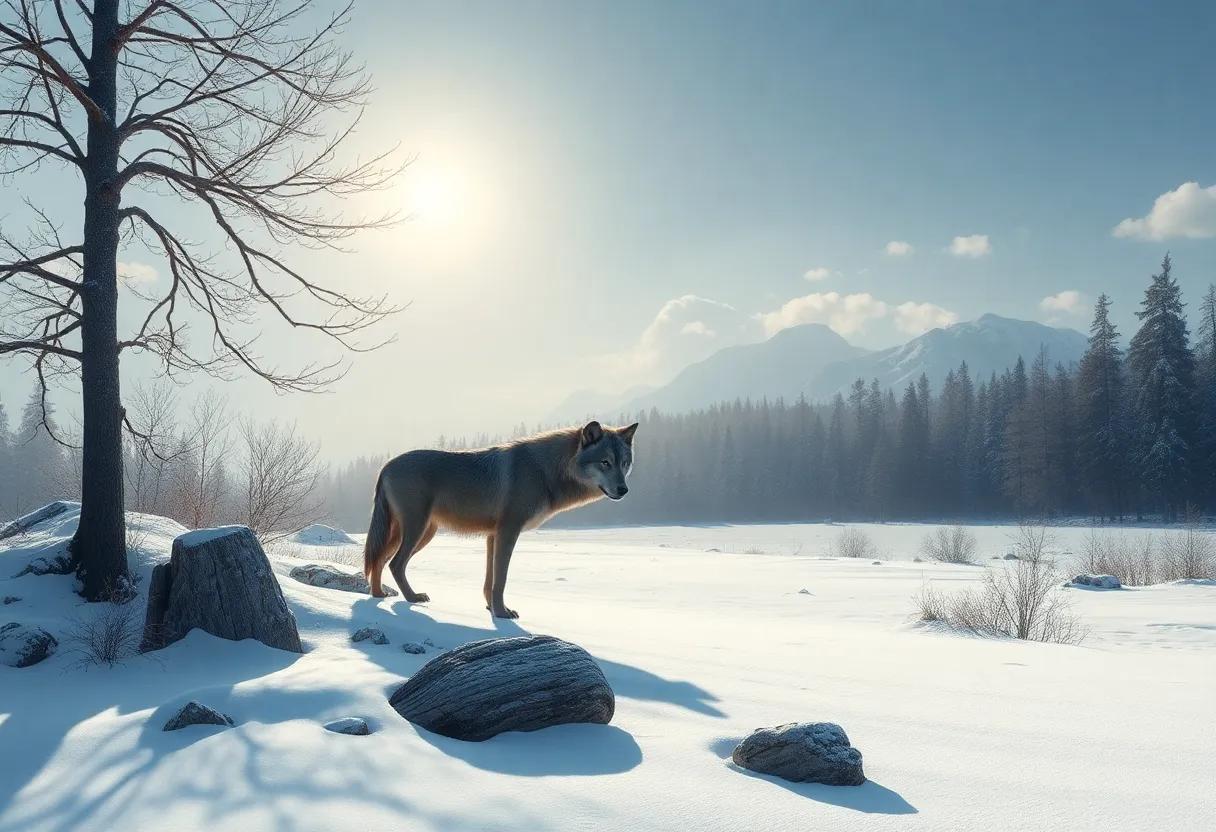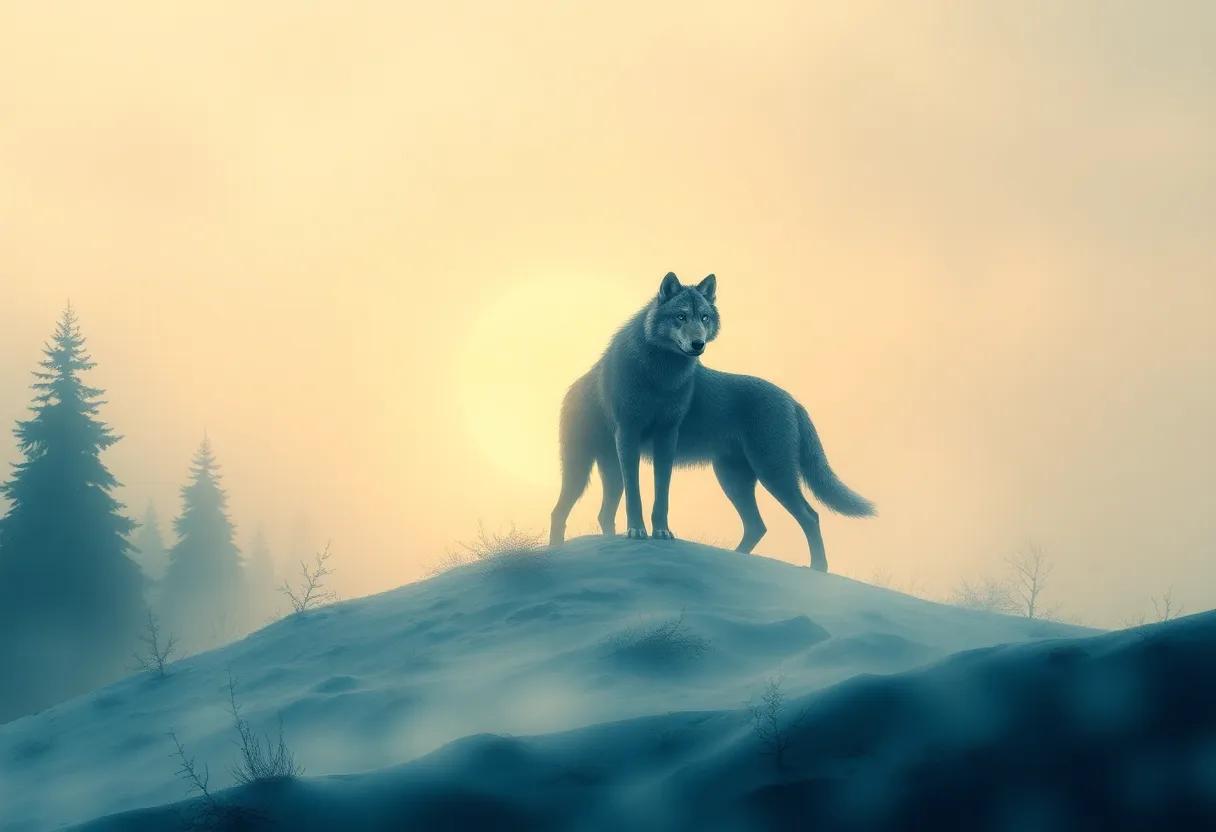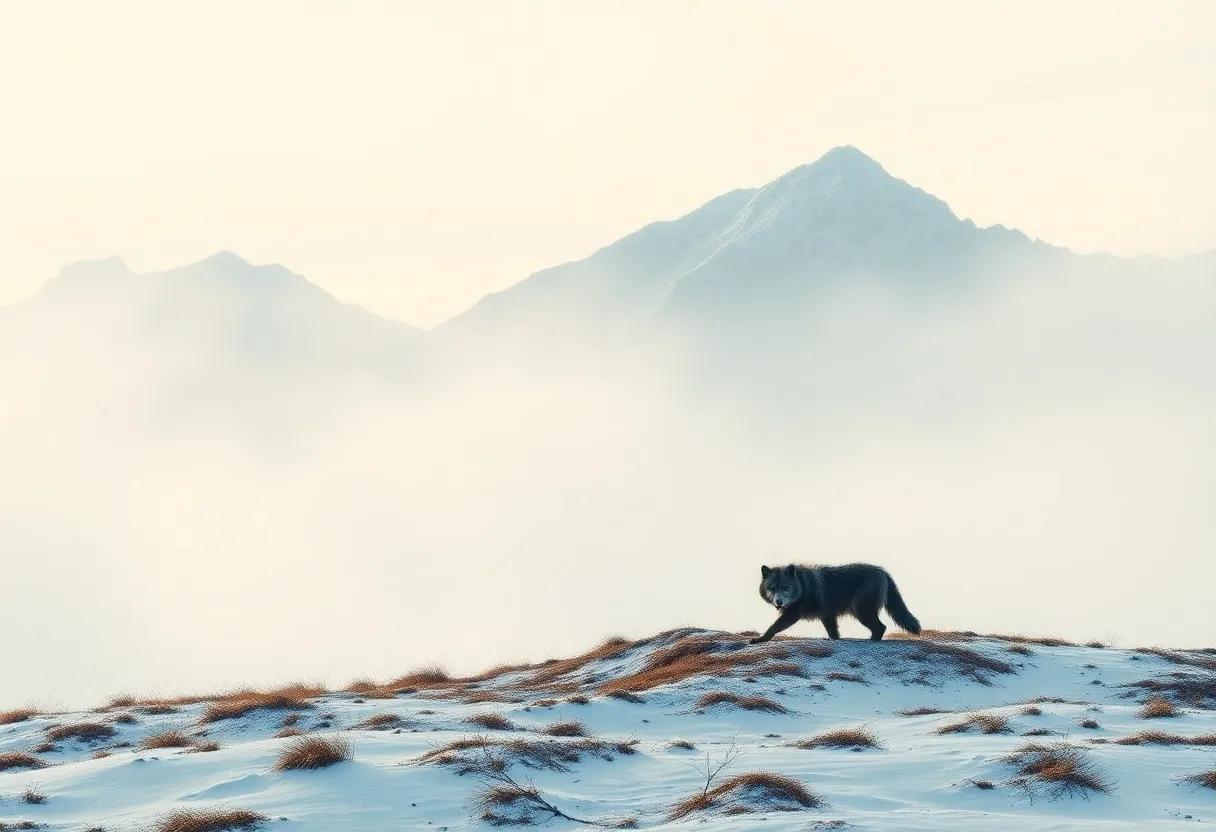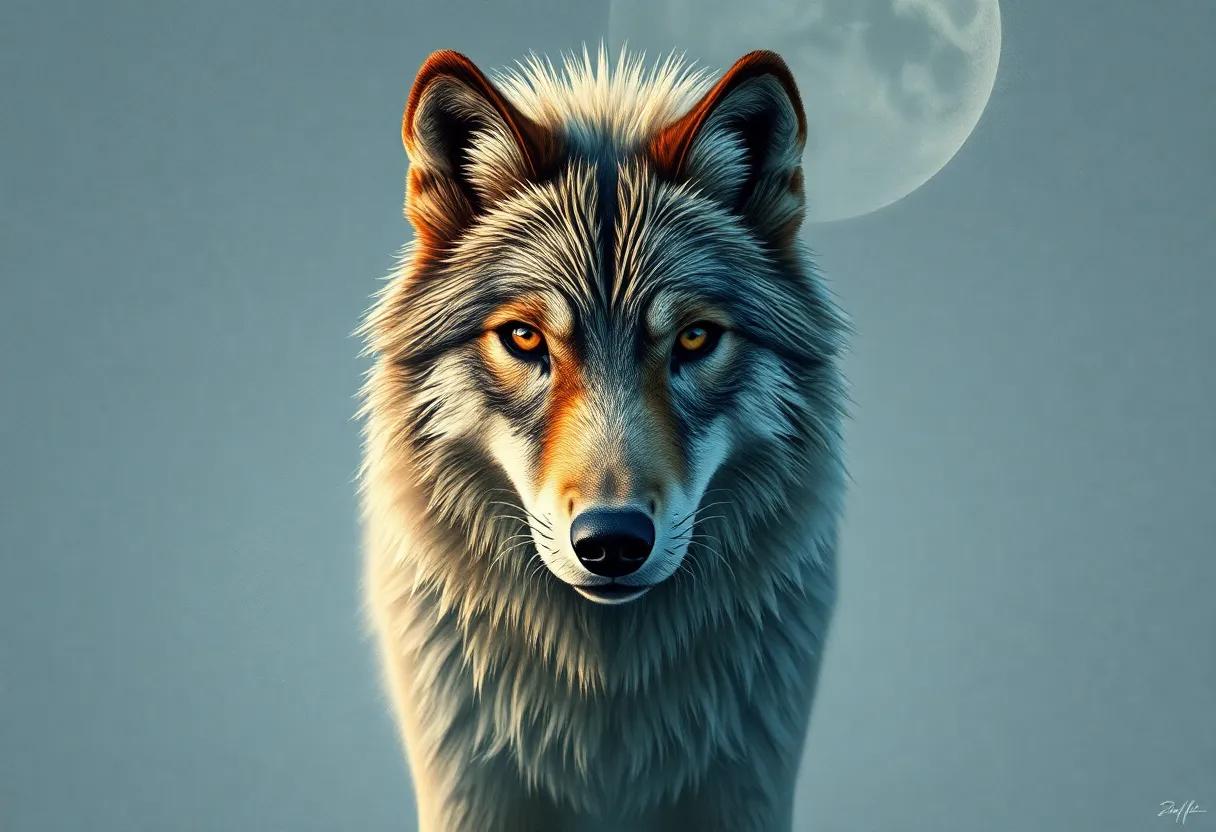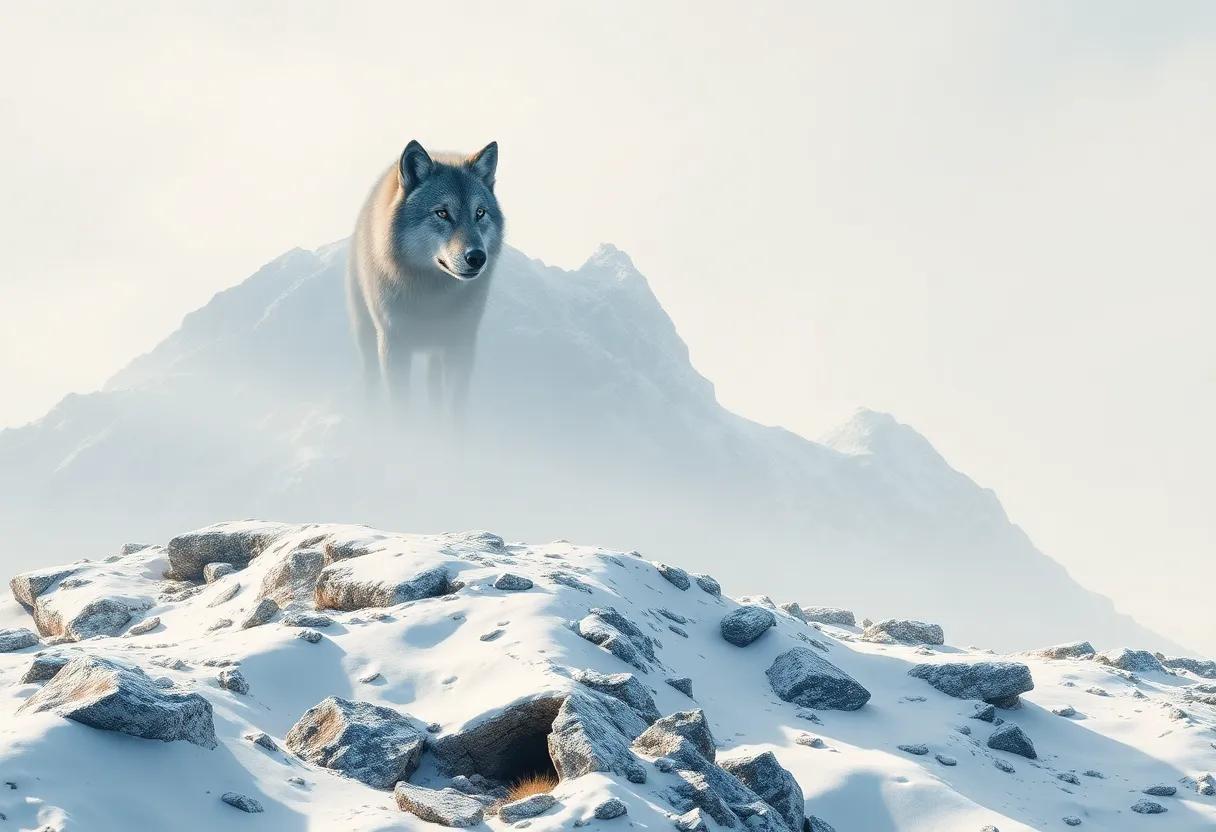In the realm where nature’s rawness intertwines with the complexities of human emotion, “Once There Were wolves” by Charlotte McConaghy emerges as a compelling narrative that explores themes of wilderness and redemption. mcconaghy’s novel invites readers into a world where the revival of a wolf pack becomes a poignant metaphor for survival, healing, and the delicate balance between destruction and renewal. this review delves into how the author navigates the intricate relationship between humanity and the wild, crafting a story that is as much about personal transformation as it is about ecological restoration. Through vivid prose and thoughtfully drawn characters, “Once There Were Wolves” challenges us to reconsider our place within the natural world and the possibility of redemption that lies therein.
The Intricate Dance Between Nature and Humanity in Once There Were Wolves Explored in Depth
Once There Were Wolves beautifully captures the delicate equilibrium between humanity and the wild, portraying nature not as a mere backdrop but as a living, breathing entity intertwined with human fate. The novel delves into the complexities of coexistence, illustrating how redemption frequently enough arises from an intimate understanding of the natural world. Through her vivid prose, McConaghy invites readers to witness the silent symphony of wolves thriving in the Scottish Highlands, while humans grapple with their own inner wilderness-emotions, prejudices, and hopes. This dance between preservation and intrusion is neither simple nor one-sided; it is a continuous negotiation where every step taken by man affects the fragile ecosystem, and every howl from the forest reverberates as a call for awareness and respect.
- Symbiosis and Conflict: The narrative explores the mutual impact between wolves’ resurgence and local communities’ cultural identities.
- Human Vulnerability: A poignant reminder of how losing touch with nature can lead to isolation and despair.
- Ecological restoration: Showcases the potential of healing landscapes and fractured lives through rewilding efforts.
| Element | Human Aspect | Natural Aspect |
|---|---|---|
| connection | Community bonds forged by shared purpose | Wolves as anchors of ecological balance |
| Struggle | Fear of change and loss of control | Survival against encroachment and extinction |
| Hope | Personal growth through empathy and courage | Renewal of wild habitats, thriving biodiversity |
Unpacking Themes of Survival and Redemption Through the Eyes of McConaghys Protagonists
In McConaghy’s novel, survival is not merely a physical struggle against nature but a profound internal battle that reshapes the soul of each protagonist. Through the rugged wilderness setting, characters are stripped to their rawest selves, confronting both the unforgiving elements and their own past wounds. The narrative meticulously explores how isolation serves as a crucible, forging resilience and a renewed sense of purpose. This journey of endurance illuminates themes of instinct and vulnerability,revealing that survival ofen demands more than strength-it requires the courage to confront inner demons and embrace transformation.
Redemption in the novel emerges as a subtle yet powerful undercurrent, woven through moments of connection, forgiveness, and self-realization. McConaghy’s protagonists frequently enough grapple with haunting memories and moral complexities, yet their relationships with nature and others offer a path toward healing.The tapestry of the story is enriched by key elements that facilitate this redemptive arc:
- Reconciliation with the Past: Characters face their histories,allowing them to break cycles of pain.
- Nature as a Mirror: The wilderness reflects internal emotions, emphasizing growth and renewal.
- Community and Trust: Bonds formed in adversity help transform isolation into belonging.
| Theme | Symbolic Element | Impact on Protagonist |
|---|---|---|
| Survival | Wolf Pack | Fosters unity and instinctive strength |
| Redemption | Forest Renewal | Represents hope and fresh beginnings |
| Isolation | Snowfall | Illustrates challenges and introspection |
How Wilderness Shapes Identity and Forgiveness in the Heart of the Novel’s narrative Landscape
The wilderness in McConaghy’s novel acts as more than just a backdrop; it becomes a crucible in which characters’ identities are tested and reforged. immersed in the raw,untamed landscape,the protagonists encounter not only physical challenges but emotional upheavals that strip away societal pretenses. In this rugged environment, the boundaries between human and nature blur, inviting reflection on the primal instincts that shape who we are beneath the veneer of civilization. The characters’ interactions with the wild-whether through the elusive wolves or the unforgiving terrain-serve as metaphors for their internal struggles, allowing them to confront past wounds and embrace transformation through raw, elemental truth.
Forgiveness, too, finds fertile ground within this wild expanse. The novel suggests that true redemption requires a surrender to the uncontrollable forces that surround us, echoing the unpredictable rhythms of nature itself. As the characters navigate grief, guilt, and resentment, the wilderness offers a space for incubating empathy and renewal. This is reflected in moments of quiet solitude and shared vulnerability, where the raw simplicity of the forest mirrors the complex emotional terrain within. The following table encapsulates the key themes linking wilderness and forgiveness in the narrative:
| Element | Symbolism | Impact on Characters |
|---|---|---|
| Wolves | Freedom, mystery, instinct | challenge perceptions, evoke primal emotions |
| Forest | Sanctuary, danger, transformation | Creates space for reflection and healing |
| Isolation | Alienation, clarity, rebirth | Forces self-confrontation and acceptance |
- Identity unfolds through the tension between human vulnerability and natural resilience.
- Forgiveness is depicted as an organic process,nurtured by the rhythm of wild cycles.
- Redemption emerges not from escape but from embracing the wilderness within and around.
The Role of Wolves as Symbolic Guardians and catalysts in the Story’s Emotional Arc
In McConaghy’s narrative, wolves emerge as more than mere creatures of the wild; thay embody a profound connection between nature and human emotion. These enigmatic beings function as guardians, silently overseeing the fragile balance of the wilderness while reflecting the internal struggles of the characters. Their presence introduces a primal energy, evoking themes of protection, loyalty, and the wild instincts buried deep within the human soul. through their eyes, readers experience a world where survival is intertwined with trust and vulnerability, challenging the conventional boundaries between mankind and nature.
The emotional arc of the story is intricately woven with the wolves’ influence, serving as catalysts for transformation and redemption. As characters grapple with loss, identity, and reconciliation, the wolves’ unpredictable behaviour mirrors their inner turmoil and eventual growth. This dynamic creates a narrative tension that propels personal change, highlighted by moments of unexpected tenderness and fierce independence. Below is a simple breakdown of the wolves’ symbolic roles within the emotional journey:
| Symbolic Role | Emotional Impact | Example |
|---|---|---|
| Guardian | Sense of safety and protection | Pack defence during threats |
| Catalyst | Provokes self-discovery | Confronting fear through interaction |
| Reflection | Mirrors inner conflicts | Solitude paralleling loneliness |
| Redemption | Possibility for healing | Rebuilding trust with nature |
A Close Look at McConaghys Lush Descriptions Bringing the Rugged Wilderness Vividly to Life
McConaghy’s prose immerses readers in the untamed grandeur of the Canadian wilderness with a painterly finesse that is as evocative as it is indeed precise. Every scene unfolds through a lens rich in texture and atmosphere, where the scent of pine needles and the crunch of snow underfoot are almost palpable. Through her meticulous attention to detail, the environment becomes more than a backdrop-it is a living, breathing character that shapes the novel’s emotional rhythms. Her descriptions meld scientific accuracy with poetic sensibility, crafting landscapes that pulse with raw, elemental power and fragile beauty.
This mastery is evident in how McConaghy captures the symbiotic dance between predator and prey, human and nature, survival and serenity. She highlights not just the wilderness’s dangers but also its sacredness,inviting readers to appreciate the intricate web that sustains life. Consider these elements that stand out in her descriptive prowess:
- Visual richness: Vivid portrayals of cascading rivers, shadow-dappled forests, and the luminous northern lights.
- Auditory depth: The haunting call of wolves, the whisper of wind through branches, and the silence of snow-covered ground.
- Emotional resonance: The wilderness as a mirror to the protagonist’s internal struggles and redemptive journey.
| Element | Impact |
|---|---|
| Light and Shadow | Creates mood shifts reflecting hope and despair |
| Seasonal Changes | Symbolizes cycles of renewal and decay |
| Animal Behavior | Anchors the story in realism while exploring instincts |
Examining the Moral Ambiguities and Environmental Ethics Embedded in the Plot
In this novel, moral complexity is woven into the narrative like the dense forests that embrace the characters’ lives.The story refuses to paint any individual or group in stark black and white, rather revealing a spectrum of ethical dilemmas faced by those trying to coexist with the wild. The wolves symbolize more than just wilderness; they are a mirror reflecting humanity’s often conflicted relationship with nature. Characters wrestle with questions about intervention versus natural order, conservation efforts tinged with unintended consequences, and the price of redemption when balancing survival against ecological obligation. This tension challenges readers to rethink simplistic ideas about right and wrong, pushing them into the gray areas where empathy and pragmatism collide.
- Conservation vs. Community: How does protecting a species disrupt the lives of local people?
- Nature’s Autonomy: Should humans interfere in ecosystems, or let natural processes take their course?
- Redemption in Action: Can harming the environment ever be justified by noble personal motives?
| Ethical Theme | Illustration in Plot | Impact on Characters |
|---|---|---|
| Human-Wolf Relationship | Tense coexistence and mistrust | Trust building and fear |
| Intervention Ethics | reintroduction of wolves | Internal conflict and community backlash |
| ecological Balance | Restoring damaged habitats | Hope and sacrifice |
Narrative Structure and Pacing That Blend Tension with Poetic Reflection Throughout the Novel
McConaghy’s novel masterfully interlaces moments of high tension with lyrical passages that invite contemplation, creating a rhythm that mirrors the unpredictable wilderness itself. The narrative unfolds with deliberate pacing, allowing readers to feel the weight of each encounter and the silent breaths between them. Sudden flare-ups of conflict-whether between human characters or between man and nature-are carefully tempered by reflective interludes that delve into memory, loss, and the delicate balance of ecosystems. This careful balance keeps the reader both engaged and introspective, as the story resists rushing toward resolution, instead echoing the natural ebb and flow of life.
Throughout the book, various techniques contribute to this immersive experience:
- Shifting perspectives that deepen emotional resonance and broaden understanding
- Evocative descriptions that elevate momentary actions into poetic symbolism
- Strategic pauses that allow the narrative tension to simmer beneath the surface
- Interspersed natural history elements that root the story’s urgency in real ecological stakes
| Element | Function | Effect |
|---|---|---|
| Short chapters | Accelerate tension | Maintain brisk, gripping momentum |
| Extended prose passages | Encourage reflection | Evokes emotional depth and introspection |
| Symbolic imagery | Bind narrative layers | Infuses story with poetic resonance |
The Subtle Interplay of Personal Trauma and Collective Healing in McConaghys Storytelling
McConaghy’s narrative weaves a quiet and profound tension between the intimate scars of personal trauma and the expansive journey towards collective redemption. The characters are etched with nuanced vulnerabilities that resonate beyond their individual stories, embodying pain that stems from lost connections, unresolved grief, and fractured identities. Yet within this tapestry of suffering, nature emerges not only as a backdrop but as a living force that offers a silent promise of restoration. The wilderness becomes a metaphorical crucible where personal wounds are exposed, confronted, and slowly stitched together through acts of empathy, resilience, and understanding.
Central to this dynamic is the implicit message that healing transcends the solitary path. Through McConaghy’s deft storytelling, we observe that reconciliation with trauma is deeply interwoven with communal responsibility and shared experience. the novel emphasizes elements such as:
- Interdependence: how characters rely on each other to navigate emotional landscapes and environmental challenges.
- Nature as healer: the role of wilderness in facilitating spiritual renewal and self-discovery.
- Cycle of restoration: personal recovery echoing broader ecosystem revitalization.
| Theme | Impact on Characters | Reflection in Plot |
|---|---|---|
| Isolation & Connection | Fosters introspection and eventual openness | Struggles with community integration |
| Loss & Acceptance | Triggers trauma but enables growth | Reconciliation of past events |
| Wildness & Control | Challenges human dominance | Shifts in human-animal relationships |
Why Once There Were Wolves Resonates With Readers Seeking Stories of Resilience and Hope
Readers are drawn to Once There Were Wolves because it weaves a tapestry of survival amidst nature’s indifferent wilderness, mirroring the inner battles we all face. The story’s raw portrayal of loss and healing doesn’t just recount events; it breathes life into the resilience found in the human spirit. As characters confront unforgiving landscapes and personal tragedies, their journeys become a beacon of hope-reminding us that even in the darkest moments, renewal is possible.
what truly sets the novel apart is its delicate balance between despair and optimism, showcased through elements like:
- Gritty realism: The vivid descriptions of both the external environment and emotional turmoil.
- Complex characters: Flawed yet fiercely determined, making their growth authentic and relatable.
- symbolic nature: Wolves as metaphors for community, survival, and the wildness within us.
Together, these threads create a narrative fabric that resonates deeply with readers searching for stories that don’t shy from hardship but ultimately celebrate the power of endurance.
| Theme | Impact on Readers |
|---|---|
| Resilience | Inspires enduring spirit despite adversities |
| Hope | Encourages belief in renewal and change |
| Nature | Connects human experience with the wild world |
Balancing Myth and Reality How Folklore Infuses the Wilderness setting With Rich Layers of Meaning
The wilderness in Once There Were Wolves is more than a backdrop-it is a living, breathing entity infused with layers of folklore that blur the line between myth and reality. McConaghy weaves tales of wolves as spirits and guardians, echoing Indigenous and local legends that have long whispered through the towering pines and misty valleys.These ancestral stories are not mere embellishments but essential threads that enrich the natural landscape,turning it into a realm where every rustle in the underbrush and each shadow cast by the moon carries symbolic weight. This symbiosis of myth and environment deepens the narrative’s emotional resonance,making the wilderness a place where redemption is not only possible but predestined by the land’s ancient rhythms.
within this framework, McConaghy’s portrayal invites readers to consider the wilderness through a prism of reverence and complexity. Here, folklore does not romanticize nature but acts as a conduit for understanding the fragile balance between human frailty and the untamed world’s enduring strength.Key motifs emerge throughout the story, highlighting this intricate relationship:
- Transformation: Wolves symbolize both danger and healing, embodying the duality of nature and human experience.
- Ancestral Memory: The wilderness holds stories passed down through generations, acting as a collective consciousness.
- Interconnectedness: Every element of the forest is part of a larger web, weaving humans and animals into a shared fate.
An insightful Guide to McConaghys Unique narrative Voice and Literary Style Choices
McConaghy’s narrative voice emerges as a delicate balance between raw intensity and reflective subtlety, mirroring the wilderness landscapes she vividly conjures. Her prose is often described as lyrical yet precise,inviting readers into the visceral sensations of the natural world without overt romanticism. The author’s choice to employ a multi-layered point of view enriches the text, weaving human emotions tightly with the instincts of the wild wolves that roam the story. This fusion creates a powerful rhythm, where the pacing mimics the unpredictable flow of nature, alternating between moments of urgent tension and quiet introspection.
Literary techniques such as free indirect discourse and restrained dialog deepen character development while preserving a sense of mystery. McConaghy’s style is further marked by:
- Sparse but evocative descriptions that foreground sensory details-sounds, scents, textures
- Fragmented sentence structures echoing the fragmented coexistence of humans and wilderness
- Symbolism tied to animal behavior, using wolves as metaphors for themes of belonging and survival
| Technique | Effect |
|---|---|
| Free Indirect Discourse | merges character voice with narration |
| Sensory-rich Imagery | Creates immersive atmosphere |
| Fragmented Sentences | Reflects internal and external chaos |
Recommended Audience and Contexts Where This Novel Offers Valuable Perspectives and Inspiration
Once There Were wolves resonates profoundly with readers who seek a profound connection with nature and the complexities of human emotion. Ideal for environmental advocates, students of ecological literature, and anyone fascinated by the interplay between wilderness and humanity’s innermost struggles, this novel offers fresh insights grounded in authenticity. Its themes of restoration and conflict invite readers to reflect on their own values regarding conservation, coexistence, and healing, making it especially impactful in academic settings, book clubs, and wilderness therapy discussions.
The story’s layered narrative also renders it invaluable in contexts where empathy and ethical dilemmas are explored. Whether used as inspiration in creative writing workshops or as a case study in courses examining moral choices in environmental science, Once There Were Wolves encourages a nuanced understanding of redemption that transcends the pages. Below is a simple overview illustrating where this novel’s perspectives shine brightest:
| audience | Context | Value Offered |
|---|---|---|
| Environmental Students | ecology Courses | Realistic portrayal of species reintroduction challenges |
| Creative Writers | Writing Workshops | Exploration of emotional conflict and redemption arcs |
| Book Clubs | Group Discussions | Stimulates debate on human-nature relationships |
| Therapists | Wilderness Therapy programs | Inspiration for healing through nature |
About Charlotte McConaghy The Author Behind This Compelling Exploration of Nature and Human Spirit
In the tangled wilds of McConaghy’s Once There Were Wolves, readers are invited to traverse not only physical landscapes but the intricate terrains of morality, grief, and belonging. Wilderness and Redemption captures this delicate balance with nuance,offering a thoughtful lens through which to reflect on the novel’s haunting beauty and complexity. whether you walk away with a sense of hope or lingering questions, the journey through these pages proves an evocative exploration of nature and the human spirit-an invitation to ponder what it truly means to find redemption amidst the untamed.

